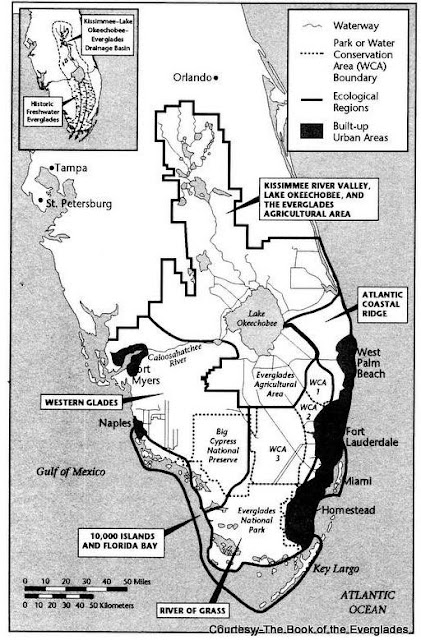Hemamala, Uditha, Naveen & Bhagya
The Everglades located in the state of Florida USA is said to be the largest mangrove ecosystem found in the western hemisphere. Therefore a major land mass of the State of Florida is covered by this unique marshland. This is a very slow moving water body fed by the river Kissimmee and the Lake Okeechobee. The place names very significant to the American Indian of the south who had a way of life living off the marshy environment.
The Year 1882 saw the fist impact of the modern world man in draining the marches to develop the south Florida metropolis. This exercise was brought to a halt in the mid 1900 as the effects of the impact on the environment were to be felt by man. Right now the government of the US and the Florida state government are working on a plan to bring back the Everglades to its original status.
As a first step large areas that were drained out for agriculture are taken over for the mash ecosystem to expand. The once abundant custard apple forests are now reviving. Declaring 25 percent of the original Everglades marshland region of southwestern Florida as the Everglades National Park is a significant step towards restoration. It has been declared an International Biosphere Reserve, a World Heritage Site, and a Wetland of International Importance. This is therefore one of only three locations in the world to appear on all of the three listings.
The Everglades National Park is now the home for the very severely threatened Florida Panther, American Crocodile and the West Indian manatee. Furthermore the Everglades have been the haven for southern America’s water bird populations. There had been large breeding colonies of the Wood stork and the Roseate spoonbill in the past that where almost whipped out through hunting for their downing feathers for the pillow and quilt industries. These colonies are now picking up, but Roseate Spoon bill is still having the impact of destruction faced years back.
The Park is very popular of its two camping sites at Long Pine and at the Flamingo; named after the abundance of the tree and bird species in location. The camps are hired for people during the dry season and are available free during the rainy season. In the rainy season it’s free for everyone including the marauding masses of mosquitoes that attack you from all directions in columns which only have to be experienced and not explained.
We had this novel experience just as the off season commenced in May 2009. Following are some memorable events of this camping excursion.
 |
| Corn on the cob |
 |
| Spotting vultures |
 |
| Red-shouldered Kite |
 |
| Birding |
 |
| Wood storks |
 |
| Roseate Spoonbill |
 |
| Board walks |



No comments:
Post a Comment